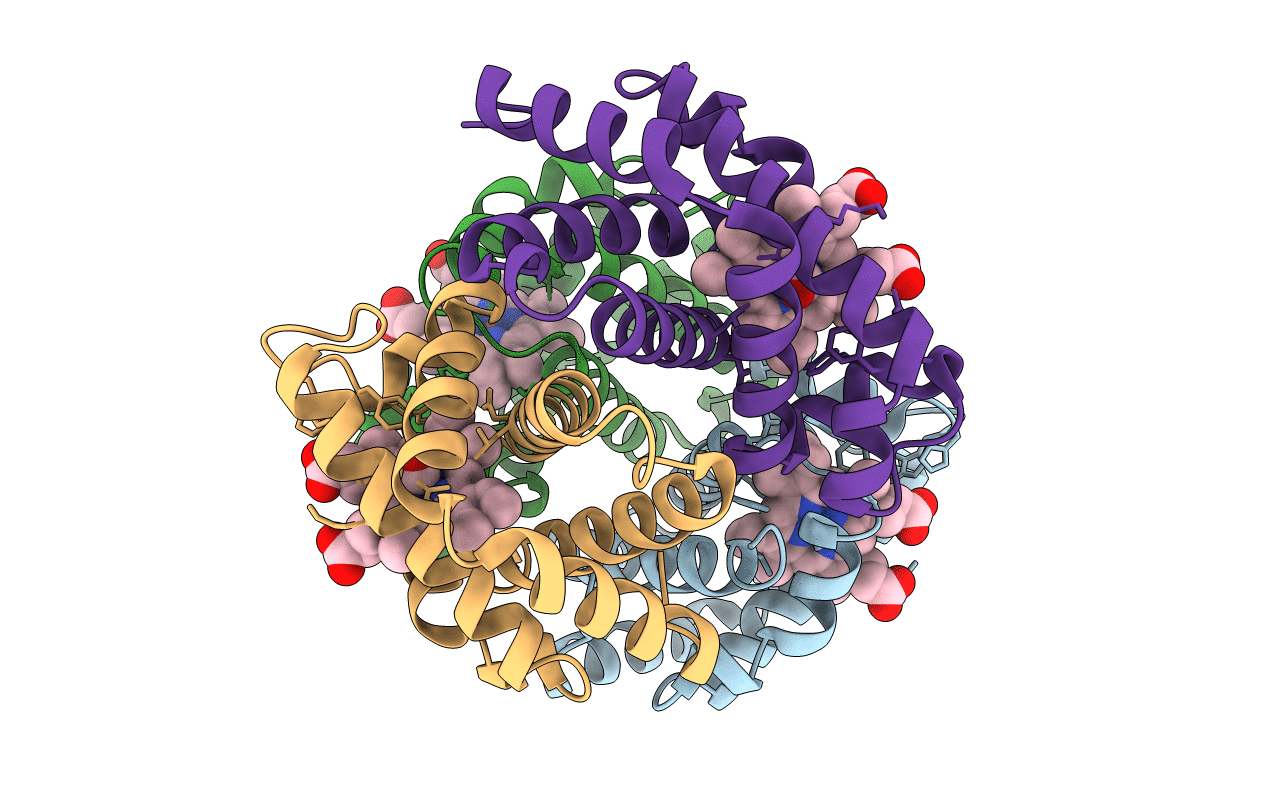
Deposition Date
2003-11-19
Release Date
2004-07-06
Last Version Date
2024-11-06
Entry Detail
PDB ID:
1V4U
Keywords:
Title:
Crystal structure of bluefin tuna carbonmonoxy-hemoglobin
Biological Source:
Source Organism:
Thunnus thynnus (Taxon ID: 8237)
Method Details:
Experimental Method:
Resolution:
2.00 Å
R-Value Free:
0.26
R-Value Work:
0.20
R-Value Observed:
0.20
Space Group:
P 21 21 21


